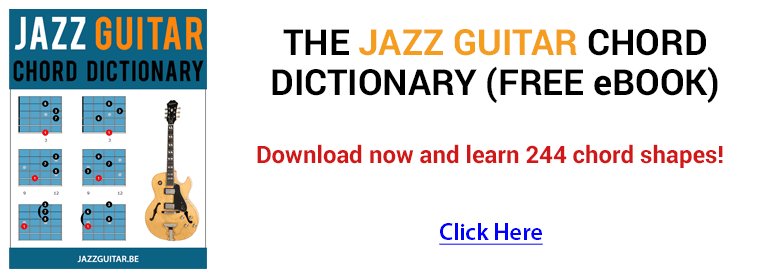-
Hi all,
I hope you are all doing OK. I am learning Stella by Starlight and I have a reasonable grip on the flow of the tune. But for some reason I am having a mental block on the G altered chord in bar 17 and 18 going into C-7. I just can't seem to play anything musical over it. I have tried alerted arpeggios, playing through the chord with melodic ideas but nothing sounds right. Currently I am just playing the melody until I get to safer ground!
I think I am not seeing it's function with in this section, everything else seems logical but I think I have got chord blindness on this one.
Any advice on playing this chord, or more likely seeing it in context and playing through it to the end goal would be much appreciated.
PS if this is better in Songs or Beginner section please move
-
10-31-2020 11:58 AM
-
What do you normally play on a dominant to tonic movement? Because that’s really all it is, a V7 going to i. (i.e. G7 going to Cm.) Every standard is full of such movements.
Here the V7 lasts for two bars, that’s the only slight complication.
-
The melody emphasizes the #5 (b13) so I’d work around the C harmonic minor (G7b9b13) or Ab melodic minor (G7#5b5#9b9). If your ideas aren’t sounding good to you, try using Abmi6, Ebma7 or Fmi6 arpeggios over it.
This isn’t by any means a full list of alternatives. It’s more an idea of where to start looking.
-
Play Fm11
-
And then make sure you play into the Cm chord, by which I mean target chord tones using enclosure etc
-
Also on the first two bars, play G minor
It will sound really good. Don’t ask why haha
(Well Ok it’s cos dominant chords are lame.)
-
For a spot of fun try Dbm7
-
or Abm6dim
 Originally Posted by christianm77
Originally Posted by christianm77
-
For me G alt scale (and any arpeggio in it) works fine, and easy to resolve to cminor, then (on Ab13) the D alt scale gives you the chance to play a parallel idea what you played two bars before
-
Don't forget G whole tone. That chord is, arguably, more a G7#5 than a Galt. The melody is D#. The whole tone scale gives you 6 notes to play. That's the good part. The bad part is that it may be so obviously a WT scale that it won't sound sufficiently musical, so you have to be sure you're making a good melodic statement. G A B C# D# F. You probably want to avoid D and F# because those two notes will conflict with the #5 and the b7 of the chord. C doesn't sound too good to me. But, you can play around with the rest, Ab Bb E. That makes G G# A A# B C# D# E F.
Easier to remember the avoid notes. That is, be careful with D F# and C.
-
The chord written is G augmented 7. That one's a sinch. Whole tone like mentioned above. If you can't make up a melody just play a pattern in whole tone then move it up in frets in multiples of 2. Super easy. You're overthinking it.
-
sure, if you are into that sort of thing
 Originally Posted by pcjazz
Originally Posted by pcjazz
-
Stella for the relaxed.
Do the ones in brackets if you can be bothered.
| Gm | % | Cm | % |
| Fm | (Bm) | Eb | Ebm |
| Bb | Gm | Dm | Bbm |
| F | Gm | Cm | (Ebm) |
| Fm | (Abm) | Cm | % |
| Ebm | % | Bb | % |
| Gm | % | Fm | % |
| Ebm | % | Bb | % |
minors can be any minor you want. I don't care.Last edited by christianm77; 10-31-2020 at 07:34 PM.
-
Now you have a million answers, as usual. Ab mel will do it because the G7+ is an altered chord. Resolves nicely into Cm too.
By the way, how fast are you playing it?
-
Well if you're playing it by yourself, you can do whatever you want. There are a handful of good scales for a dominant 7 chord. But the chord which is written is a G augmented 7. The scale which goes with those chord tones and tonality is the whole tone scale. If you want to use a different tonality and still hit the chord tones then by all means use phrygian dominant or Bb F- this and that over G. It's a point in the song with 2 measures for one chord and if you use a symmetric scale it's a chance to run a cool pattern as long as you move it in increments of 2 frets. Pretty simple.
Last edited by Clint 55; 10-31-2020 at 11:51 PM.
-
For the G7#5 there are progressively more outside ideas to consider - Gaug, Gaug/F, Db Lydian Dominant, Dbdim W-H... plus others mentioned by others.
This chord in this song is like a harmonic regrouping point; what you play there needs to be informed by what is coming up next. Because of their harmonic similarity it is possible to play the same identical line and notes over this chord and the next two, but that is what you don't want to do. To help avoid that it may help to treat this as finding a solution that distinguishes and expresses all three chords leading into the Bb... motivating a concept, line, or phrase as a big "chunk" to span all three chords, a solution that may include playing two different things over a chord, spanning something across a change in chords, etc.
-
Thanks these sound like a good starting point!
 Originally Posted by setemupjoe
Originally Posted by setemupjoe
-
Thanks, I think maybe it is the 2 bar hang that gets me but working round it a bit better now after reading the replies here. I think it was a mental block really!
 Originally Posted by grahambop
Originally Posted by grahambop
-
Thanks, yes always a lot of great info! Like the Miles version on the live album My Funny Valentine.
 Originally Posted by ragman1
Originally Posted by ragman1
-
Babaluma -
I wasn't going to do this but it kept talking to me so it looks like it's going to happen. Same speed as Miles.
I've set it up by playing
Am7b5 - D7b9 - G7+ - %
Cm7 - (Cm6) - Ab13 - BbM7
Here are the ideas that have been floated here over the G7+. In order:
C harm m
Wholetone from root F
G7 alt (Ab mel m)
Fm11 (Ab maj pentatonic)
Db mel m
C harm works well. I don't particularly like the wholetone. The G7alt is okay but maybe a bit far out. The Fm11 works but the earth doesn't move much. And the Db mel m is rather nice.
Now you're spoilt for choice :-)
-
Play through the whole tune only using the notes of the Bb major scale - but be aware of how the notes you play relate to the harmony .
Do that a lot , then start to embellish with a few choice harmony notes .
-
I usually play G7#5 there, so I thought how about G mixolydian #5?
It turns out that G A B C D# E F is not a scale with its own name.
If you lower the E instead of raise the D, it's Cmelmin -- which sounds better - the E is an avoid note to my ear.
If you omit the E and raise the C to C# it's G whole tone.Last edited by rpjazzguitar; 11-02-2020 at 03:16 PM.
-
Natural E and F# are avoids. Although these days...!
You can play Eb major over G7+ - Cm but it's probably a bit basic.
-
Yes, it's a G+ chord in the sheet music I have. I've always went with the G alt (super locrian) scale myself. Just an arpeggio of the G7+5 is a good start.
How about starting with an ascending chromatic run from B to Eb (or descend from Eb to B), then going into a G7+5 arpeggio, or anything that sounds good in the alt scale or Whole tone scale? The rhythm is something you can experiment with too. All 8th notes or start with a quarter note then 8th notes?
I usually include an Ab (flat 9) as well as the +5 because it's what I hear . There are many possibilities.
. There are many possibilities.
-
These kind of discussions really encapsulate the problems discussed in that Richie Hart interview...
This may save time and verbiage
if you can’t play convincing sounding jazz lines over G7-Cm, nothing in this thread, most definitely including my posts, will help you.
Harmony is so much of a small part of it, and yet it is all people talk about. You have to be able to make melodies.
There are a thousand recordings of Stella. Find out what those people - people who are the people you really want to be emulating - do over those chords, because that’ll be so much richer than some scale prescriptions. JUYFE!




 Reply With Quote
Reply With Quote







Playing live and getting the best sound from the...
Yesterday, 02:08 PM in Guitar, Amps & Gizmos